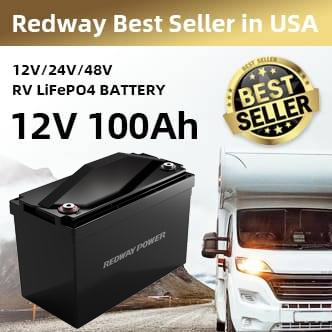Choosing the right forklift mast depends on your load requirements, lift height, and workspace constraints. Consider mast types, lifting capacity, and visibility to optimize efficiency and safety. Understanding mast features, operational environment, and battery compatibility—such as lithium options from Redway Battery—ensures peak performance.
What Are the Different Types of Forklift Masts and Their Uses?
Forklift masts come primarily in three types: Standard (Two-Stage), Triple-Stage (Three-Stage), and Quadruple-Stage masts. Standard masts are best for low lift heights, while triple and quadruple masts offer higher reach and better maneuverability in tight spaces. Choose depending on the maximum lift height and operational area.
The mast type you select hinges on your warehouse layout and lifting needs. A standard two-stage mast offers a simple lift up to about 10 feet and is ideal for heavier loads at lower heights. Triple-stage masts provide higher reach—typically up to 16 feet—without increasing the forklift’s height, improving versatility. Quadruple-stage masts are used for maximum reach in narrow aisles, common in high-rack warehouses.
Wholesale lithium golf cart batteries with 10-year life? Check here.
Selecting the right mast type enhances both safety and productivity by reducing strain on the forklift’s hydraulic system and allowing the operator better visibility and control.
How Does Forklift Mast Height Impact Your Operations?
Mast height affects load reach and handling efficiency. A taller mast increases lift capability but may reduce stability and visibility. Matching the mast height to your facility’s ceiling clearance and rack heights is crucial to prevent operational hazards.
Want OEM lithium forklift batteries at wholesale prices? Check here.
Longer masts allow forklifts to lift loads to higher shelves but might require additional counterbalance weight to maintain stability. In warehouses with low ceilings or doorframes, a shorter mast may be necessary. Consider the environment carefully—indoor vs. outdoor use, roof height, and any overhead obstacles.
Operators benefit from adjustable or multi-stage masts to adapt to varying height needs. Incorrect mast height can cause inefficient load handling, product damage, or accidents.
Which Forklift Mast Features Enhance Safety and Efficiency?
Safety features include tilt control, load backrest, and reinforced carriage. Efficiency improves with features like free lift and side shift. These innovations reduce load sway, improve load stability, and increase maneuvering precision.
Tilt control adjustments help maintain load balance during lifting, avoiding spills or drops. Load backrests stabilize bulky or unstable cargo. Free lift, a function in some multi-stage masts, raises the forks without extending mast height—crucial in confined spaces. Side shift enables horizontal fork movement, allowing precise load positioning without moving the entire forklift.
These features also reduce operator fatigue by simplifying complex movements and enhancing visibility. When paired with lithium battery-powered forklifts from Redway Battery, operators experience longer run times and consistent power, amplifying efficiency.
Why Is Compatibility Between Forklift Mast and Battery Important?
A forklift mast’s weight, hydraulic demand, and operational duration directly relate to battery performance. Lithium batteries, like those from Redway Battery, offer stable power, lightweight benefits, and longer cycles, optimizing mast function and reducing downtime.
Masts with multiple stages or heavier construction require efficient power delivery for hydraulic lifts and controls. Traditional lead-acid batteries add weight, reducing payload capacity and increasing maintenance. Lithium-ion batteries are lighter, providing consistent voltage for smooth hydraulic operation and faster charging.
Redway Battery’s lithium solutions enable forklifts with complex masts to maintain peak performance throughout shifts, extending equipment lifespan and improving cost efficiency for businesses.
How Do Workspace and Load Characteristics Influence Forklift Mast Selection?
Consider aisle width, load size, frequency, and weight. Narrow aisles require compact masts with versatile reach, while bulky or frequent loads demand robust, high-capacity masts that ensure stability during repetitive lifts.
In warehouses with narrow aisles, triple or quadruple masts with free lift capability enable vertical reach without compromising maneuverability. For heavy or oversized cargo, a standard mast with reinforced structure may be preferable to maximize strength and reduce wear.
The load frequency also dictates mast durability. Frequent lifts necessitate masts designed for continuous heavy-duty use, supported by reliable battery systems such as Redway’s lithium packs, to maintain operational continuity.
How Can You Customize Forklift Masts to Optimize Performance?
Customization options include adjusted mast height, reinforced components, integrated sensors, and compatibility with lithium battery systems. Tailoring masts to specific operational needs improves workflow and safety.
Forklift mast customization enhances performance by adapting to unique warehouse environments. For example, adding reinforced thickness to mast channels can extend durability for extremely heavy loads. Sensors integrated into the mast can provide operators with real-time load data to prevent overloading.
Lithium battery integration, such as with Redway Battery products, supports more complex mast functions and reduces overall forklift weight, improving fuel efficiency and response times. Consulting OEM specialists ensures the best combination of features for your application.
What Are the Maintenance Considerations for Different Forklift Masts?
Maintenance varies by mast complexity; multi-stage masts need routine inspection of chains, pulleys, and hydraulics. Proper lubrication and battery upkeep are vital for smooth operation and longevity.
A simple two-stage mast involves fewer moving parts and thus lower maintenance. Triple- and quadruple-stage masts contain extra chains, rollers, and hydraulic cylinders which wear over time. Regular inspection for wear and tear, timely lubrication, and hydraulic fluid checks prevent breakdowns.
Battery maintenance is equally important. Lithium batteries like Redway Battery’s offer lower maintenance than lead-acid types—no watering or acid levels to monitor—and last longer, cutting overall forklift downtime.
When Should You Upgrade or Replace Your Forklift Mast?
Replace masts showing significant wear, frequent hydraulic failure, or insufficient lifting capacity for evolving operational needs. Upgrading can enhance safety, efficiency, and integration with new battery technologies.
Signs for mast replacement include cracked welds, bent forks, degraded chains, or inconsistent lift performance. If your facility’s inventory or storage methods change—requiring higher lifts or tighter maneuvering—you might need a mast upgrade.
Newer masts designed to leverage lithium battery technology, such as products from Redway Battery, can offer improved energy efficiency, reduced operating costs, and enhanced safety. Periodic evaluation of mast condition and compatibility with forklift power sources ensures sustained productivity.
Redway Expert Views
“Choosing the right forklift mast is not just about lift height or load capacity. Integrating advanced energy solutions, like lithium batteries from Redway Battery, transforms operational efficiency and safety. Our lithium battery packs are designed to complement high-performance mast systems by delivering consistent power output, reducing forklift weight, and minimizing maintenance — crucial factors for modern logistics demands. We recommend clients assess both mechanical and energy components holistically for long-term success.” — Redway Battery Engineering Team
Forklift Mast Types Overview
| Mast Type | Typical Lift Height | Best Use Case | Pros | Cons |
|---|---|---|---|---|
| Two-Stage (Standard) | Up to 10 ft | Heavy loads, low height | Simple, durable, low cost | Limited reach |
| Three-Stage | Up to 16 ft | Medium to high reach | Versatile, compact | More maintenance, complex |
| Four-Stage (Quad) | Over 16 ft | Narrow aisles, high racks | Maximum reach, flexible | Expensive, heavier, higher maintenance |
Battery Impact Comparison: Lead-Acid vs. Lithium
| Features | Lead-Acid Battery | Lithium Battery (Redway Battery) |
|---|---|---|
| Weight Impact | Heavier; reduces payload | Lighter; increases payload capacity |
| Maintenance | High; watering & equalizing | Low; no watering, no acid spillage |
| Energy Efficiency | Moderate | High; consistent voltage for powerful lifts |
| Cycle Life | ~1500 cycles | ~3000+ cycles |
| Charging Time | 8+ hours | 1-2 hours |
| Environmental Impact | Contains hazardous acid | Eco-friendly, recyclable |
Conclusion
Selecting the right forklift mast involves analyzing your operational needs, warehouse layout, and load requirements. Consider mast type and height carefully, along with essential safety and efficiency features. Compatibility with lithium battery systems like those from Redway Battery can significantly boost forklift performance, reduce maintenance, and extend equipment life. Customization and regular maintenance ensure long-term operational success. Always evaluate when upgrades are needed to match evolving business demands.
FAQs
Q1: Can all forklifts be fitted with lithium batteries like Redway Battery’s?
Most modern forklifts can be retrofitted with lithium batteries, but compatibility depends on forklift model and mast hydraulic demands. Consult specialists for precise solutions.
Q2: How does free lift in a forklift mast improve operation?
Free lift allows the forks to raise without increasing mast height, perfect for operating under low ceiling clearances or inside containers.
Q3: Are multi-stage masts more expensive to maintain?
Yes, due to more hydraulic components and moving parts, multi-stage masts require more regular inspections and servicing.
Q4: What is the typical lifespan of a forklift mast?
With proper maintenance, masts last 5 to 10 years, though wear from heavy use or environmental conditions may reduce this.
Q5: How do lithium batteries affect forklift run time and efficiency?
Lithium batteries provide longer and more consistent run time, faster charging, and reduce the total weight of the forklift, enhancing efficiency.





